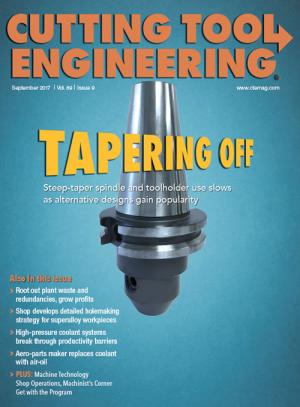Scrap happens. By scrap, I mean parts that are out of tolerance and, therefore, useless.
Scrap is the physical manifestation of a wasted machining effort. Unlike other by-products of the manufacturing process, such as chips, shavings and drops (the last bits of bar stock that are too short for making parts), you generate scrap only through mistakes.
So the challenge of reducing scrap comes down to preventing mistakes.
Step one of not making mistakes is to, counterintuitively, make mistakes. Step two is to learn from them. After generating scrap, document exactly what mistakes were made and how they could have been avoided. Then require new trainees to read these comments as part of their training. Smart people learn from others’ mistakes and don’t make the same ones.
I’ve learned to minimize scrap because of making lots and lots of mistakes. Presented here is some of what I’ve learned so that, hopefully, others don’t repeat them.
Few things waste more time in a shop than performing secondary operations on a part that should have been scrapped after the initial operation. Obviously, there’s no “best” time to scrap a part. But if there were, it would be during the design phase. For all jobs, even one-offs, make a complete plan—including drawings of all dimensions, fixtures and processes—before you remove any material.
Be as creative as possible in imagining all the ways something could go wrong. Try to ensure that each operation is impervious to operator error. The cost of rework increases exponentially the further into the processing sequence you find problems, so identify and make changes as soon as possible.
At every stage of the processing sequence, record all critical dimensions for the features machined during that stage. Log the data in the format that’s easiest to retrieve. In addition to recording the dimensions of the machined features, check each and every dimension of the part, including the dimensions checked at previous stages, for the first two parts of every run and additional parts at regular intervals. If there are only a few parts, check every single one.
Checking the previously measured dimensions helps prevent wasting time machining parts that are already out of tolerance. Forcing operators to write down all critical dimensions helps ensure that important features are not carelessly overlooked. By recording multiple measurements of a part’s features, taken by multiple operators, you can check both the operators’ and the part’s accuracy.
Communication is essential. Ensure that everyone who touches a part can communicate with everyone else who touches it. Make sure the paperwork that accompanies each part or batch of parts contains all critical dimensions. Physically mark parts to indicate if they are on the high or low end of the tolerance range. This information alerts operators further along the process chain to make adjustments and can help prevent parts with normal deviation from becoming scrap.
Finally, and most importantly, encourage operators to stop work early enough to clean up and write daily logs. Resist the temptation to try to machine “just one more” part. In my experience, most scrap is created in the last 30 minutes of the workday.
Related Glossary Terms
- tolerance
tolerance
Minimum and maximum amount a workpiece dimension is allowed to vary from a set standard and still be acceptable.

